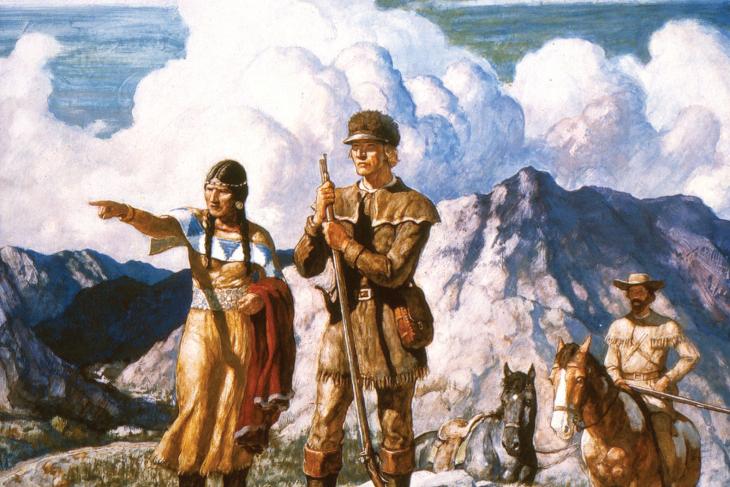On November 7, 1805, Captain William Clark wrote in his notebook about “great joy in camp.” Clark believes the Lewis and Clark Expedition is finally in sight of the Pacific Ocean. Imagine the depth of their joy after so long in the wilderness.
Unfortunately, Lewis and Clark may not have actually seen land that November day. However, evidence supports that on November 7, 1805, the Expedition was still twenty miles from the Pacific Ocean.
After paddling for weeks down the Columbia River, Lewis and Clark noticed that the landscape was different. Finally, it is believed the Expedition reached the point where the Columbia empties into Gray’s Bay.
One clue comes from the Expedition’s naming of Pillar Rock, a curious basalt column that rises fifty feet above the bay. Gray’s Bay is a dangerously storm-tossed brackish estuary the Expedition was forced to take shelter from for a week as waves pinned them down in camp.
The Lewis and Clark Expedition was only able to cross the estuary with the help of indigenous peoples. The Clatsop people mastered ocean-going canoes that could combat the brutal Pacific Northwest’s weather.
There is even an account in the Expedition’s logs of Sacagawea getting seasick trying to cross the estuary.
Finally, on November 24, 1805, Lewis and Clark reached the open Pacific Ocean.
As most American school kids learn, the Lewis and Clark Expedition represents Americans’ determination to complete a challenging task. The Expedition was a search for the famed Northwest Passage, a sea lane across the American continent.
As for November 5, it is entirely possible Clark saw the Pacific Ocean beyond Gray’s Bay. However, Gray’s Bay has its name for a reason.

